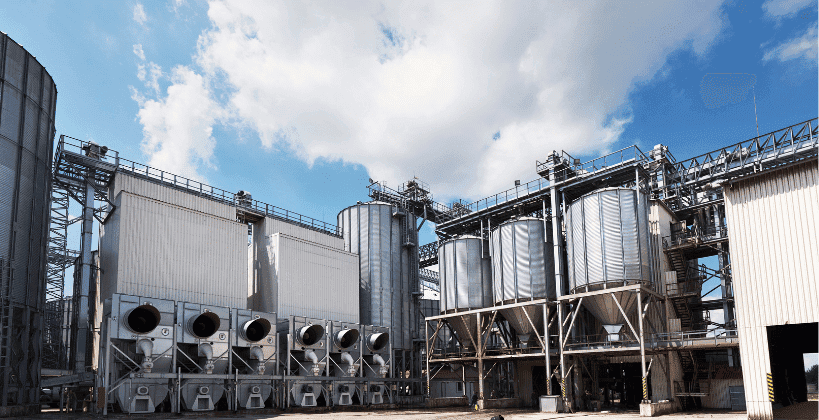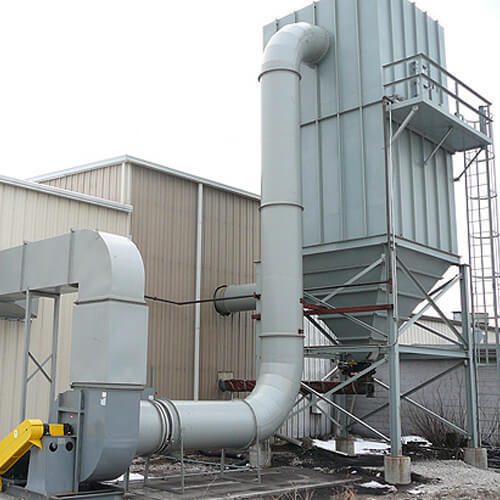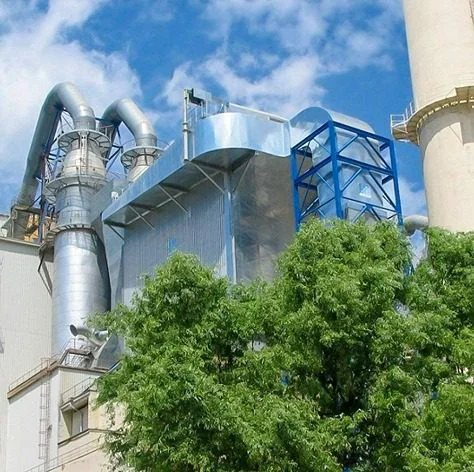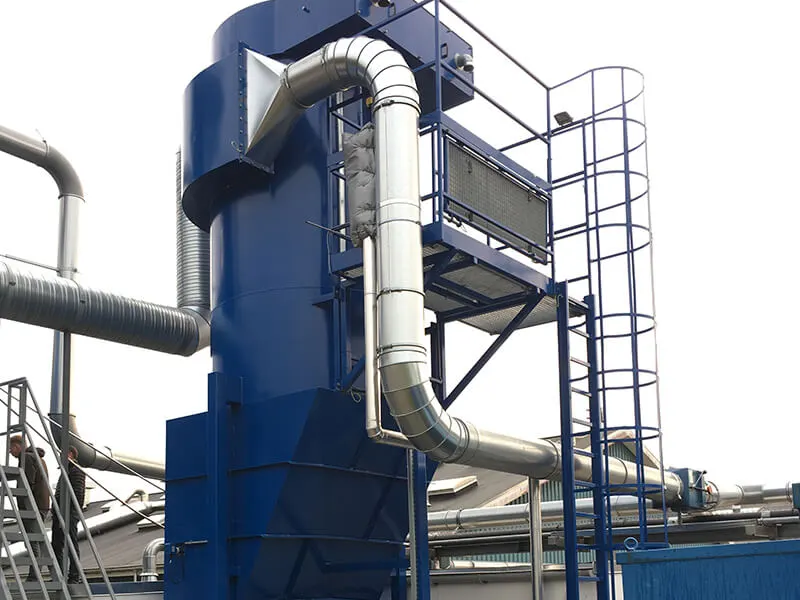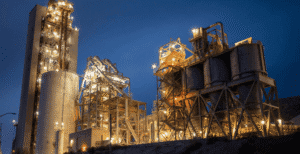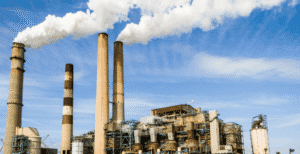Smart filtration technologies for real-time environmental monitoring are redefining how industries approach environmental protection in an age where sustainability is no longer optional, but essential. As global concerns about air and water quality intensify, there is a growing demand for intelligent, responsive, and data-driven solutions that go beyond conventional filtration methods. These advanced systems combine the power of real-time data acquisition, artificial intelligence, and the Internet of Things (IoT) to track and improve filtration performance on the go actively. At Intensiv Filter Himenviro, we are at the forefront of this transformation, developing and deploying smart filtration technologies that not only enhance pollution control efficiency but also enable continuous monitoring and rapid response to fluctuating environmental conditions. Our mission is to empower industries with tools that are not just reactive but predictive, leading the way to a cleaner, safer, and more sustainable future.
The Evolution of Filtration Systems
Traditional filtration systems have long served as the backbone of industrial pollution control, playing a critical role in capturing particulate matter and harmful emissions before they enter the atmosphere. These systems, while effective to a certain extent, are typically designed to operate on fixed maintenance schedules or manually adjusted parameters. This rigid approach limits their ability to adapt to sudden or unpredictable changes in pollutant loads, process conditions, or ambient environmental factors. As a result, traditional systems may either underperform during peak pollution events or consume unnecessary energy and resources during low-demand periods.
The advent of smart filtration technologies has fundamentally transformed this paradigm. By integrating advanced sensors, real-time data acquisition, cloud connectivity, and intelligent analytics into the filtration process, these systems offer dynamic, adaptive responses to varying environmental conditions. Instead of relying on pre-set intervals, smart filters continuously monitor parameters such as particulate concentration, pressure drop, temperature, humidity, and filter wear. This real-time insight enables automatic adjustments in operation—such as fan speed, pulse cleaning frequency, or filter replacement scheduling—ensuring optimal performance, reduced downtime, and greater environmental compliance. Essentially, these intelligent systems evolve from static components to active participants in industrial environmental management.
Integration of IoT and AI in Filtration
The fusion of the Internet of Things (IoT) and Artificial Intelligence (AI) has been instrumental in transforming modern filtration systems from passive tools into intelligent, responsive solutions. IoT devices embedded within these systems gather vast and continuous streams of data on key environmental parameters—such as air quality, particulate concentration, temperature, humidity, and differential pressure. AI algorithms then process and interpret this data in real time, enabling smart decision-making that optimizes overall system performance.
This powerful synergy between IoT and AI allows for benefits like predictive maintenance, reduced downtime, improved energy efficiency, and enhanced pollutant capture. For instance, smart filters equipped with IoT-enabled sensors can instantly detect subtle changes in operating conditions and trigger alerts or adjustments before issues escalate. When differential pressure across a filter reaches a threshold, the AI system can recommend or automatically initiate cleaning or replacement—preventing performance drop-offs and avoiding unnecessary servicing. As a result, facilities can maintain consistent filtration efficiency while lowering operational costs and extending equipment lifespan.
Real-Time Environmental Monitoring
Real-time monitoring is a cornerstone of smart filtration technologies, serving as a vital function that elevates traditional pollution control to a proactive and intelligent level. By continuously evaluating environmental and operational conditions, smart systems can detect pollution events the moment they occur and respond without delay. This real-time responsiveness is especially critical in industries where emission levels can fluctuate unpredictably due to changes in production intensity, material input, or environmental variables.
Modern monitoring systems employ a sophisticated array of sensors coupled with advanced data analytics to deliver a detailed and accurate snapshot of air quality and filter performance at any given moment. These systems are capable of identifying even the smallest variations in pollutant levels, such as a sudden spike in PM2.5 or PM10, and triggering automatic interventions—whether that means adjusting airflow, initiating filter cleaning, or alerting operators. This level of precision not only ensures ongoing compliance with environmental regulations but also helps industries maintain operational stability and public trust through transparent, data-backed environmental management.
Odkrijte naš nabor rešitev:
Študije primerov in aplikacije
Industrial Emission Control
In industrial settings, smart filtration systems have been deployed to monitor and control emissions effectively. For example, in cement manufacturing plants, these systems can adjust filtration parameters in response to changes in dust concentration, ensuring compliance with environmental regulations.
HVAC sistemi
Heating, Ventilation, and Air Conditioning (HVAC) systems have also benefited from smart filtration technologies. By monitoring air quality and filter performance, these systems can maintain optimal indoor air conditions while minimizing energy consumption.
Water Treatment Facilities
Smart filtration technologies are not limited to air purification. In water treatment facilities, real-time monitoring of filtration systems ensures the removal of contaminants and pathogens, safeguarding public health.
Benefits of Smart Filtration Technologies
The implementation of smart filtration technologies brings with it a wide array of benefits that go far beyond traditional filtration capabilities, making it a valuable investment for industries focused on sustainability, operational excellence, and long-term cost savings.
- Izboljšana učinkovitost: One of the most immediate advantages is the improvement in overall filtration performance. Real-time data from sensors enables continuous optimization of system operations—such as adjusting fan speeds, pulse timings, or cleaning intervals based on actual pollutant loads. This dynamic responsiveness leads to higher particulate capture rates, ensuring cleaner air and reduced emissions even during fluctuating production cycles.
- Prihranek stroškov: Smart filtration systems significantly reduce operational expenses by minimizing unnecessary maintenance and extending the service life of components. Instead of following fixed maintenance schedules, predictive algorithms determine the exact moment a filter or part needs attention. This approach eliminates premature replacements, reduces downtime, and minimizes labor costs, offering a strong return on investment over time.
- Skladnost s predpisi: With environmental regulations becoming stricter worldwide, real-time monitoring ensures that facilities remain within permissible emission limits at all times. These smart systems can automatically generate compliance reports, alert operators when thresholds are approached or exceeded, and provide documentation that supports audits and inspections, making regulatory management far less burdensome.
Challenges and Considerations
While the benefits of smart filtration technologies are compelling, it’s important to acknowledge that their adoption does come with certain challenges—particularly for industries transitioning from traditional systems to more advanced, digital solutions.
- Začetna naložba: One of the primary hurdles is the significant upfront cost associated with integrating smart technologies. This includes not only the purchase of advanced filtration units but also the sensors, connectivity modules, software platforms, and infrastructure upgrades required to support real-time monitoring and automation. For some organizations, especially small and medium enterprises, this initial capital outlay may seem prohibitive without a clear long-term ROI strategy.
- Data Management: Smart filtration systems generate massive amounts of data continuously, ranging from pollutant levels and pressure drops to equipment status and external environmental variables. Managing, storing, and analyzing this data in a meaningful way requires robust IT infrastructure, secure cloud solutions, and reliable analytics platforms. Without effective data management, the true potential of smart systems remains untapped, and organizations may struggle to convert raw data into actionable insights.
- Tehnično strokovno znanje: Another significant challenge lies in the human resources required to operate and maintain these systems. The integration of AI, IoT, and data analytics introduces complexity that demands specialized technical knowledge. Staff may need additional training to interpret real-time data, configure system parameters, and troubleshoot issues. For many companies, this means investing in upskilling existing teams or hiring new personnel with the relevant digital expertise.
Despite these challenges, many industries are finding that the long-term benefits of smart filtration—such as enhanced compliance, reduced operational costs, and improved sustainability—far outweigh the initial hurdles, especially as the technology continues to evolve and become more accessible.
Future Outlook
The future trajectory of smart filtration technologies is increasingly aligned with broader environmental management systems, marking a significant shift toward more integrated and holistic approaches to pollution control and sustainability. As advancements in machine learning (ML) and artificial intelligence (AI) continue to evolve, these systems will become even more capable of predicting and responding to environmental changes with greater accuracy and foresight. The enhanced predictive analytics powered by AI will allow industries to anticipate pollution events, adjust operations in real-time, and take proactive steps to minimize environmental impact before issues escalate.
In addition to improved predictive capabilities, the ongoing miniaturization of sensors and breakthroughs in wireless communication technologies are set to further expand the reach and functionality of smart filtration systems. Smaller, more efficient sensors can now be deployed in a variety of settings, including remote or hard-to-reach locations that were previously too costly or difficult to monitor effectively. Whether in isolated mining operations, rural agricultural settings, or offshore platforms, the ability to install wireless, real-time monitoring systems will make smart filtration accessible to an even broader range of industries.
This continued evolution not only enhances the efficiency and responsiveness of filtration systems but also paves the way for a more sustainable and interconnected approach to environmental management, where data from filtration systems can be integrated with other monitoring tools—such as air quality monitoring stations, waste management systems, and energy grids—to create comprehensive, real-time environmental monitoring networks. As a result, industries across sectors will be empowered to make more informed decisions, respond to environmental challenges with greater agility, and drive forward global sustainability initiatives.
Zaključek
Smart filtration technologies represent a significant leap forward in environmental monitoring and pollution control. By harnessing the power of real-time data and advanced analytics, these systems offer a proactive approach to environmental management. At Intensiv Filter Himenviro, we are dedicated to pioneering these innovations, ensuring that our solutions not only meet but exceed the evolving demands of environmental stewardship.
